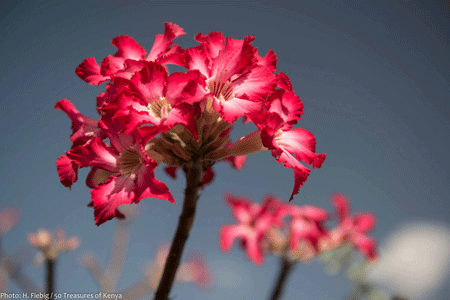
How farmers are developing Indigenous flowers
Floriculturists in the past mostly have focused on buying flower breeds from existing breeders. Innovation and high cost of accessing seeds and seedlings from breeders have now moved farmers to develop their own alternative flowers. Mr. Lawrence Mukundi an expert in the field of developing indegenous flowers had these to say.
Tell us more on how farmers are developing new flowers from indigenous flowers and what does it involve to develop these flowers?
The costs charged by conventional breeders has forced local flower growers; normaly those who grow plants for sale and would like to move into cut flowers impossible to begin. A small scale farmer may own the land and even sometimes be able to put up a couple of greenhouses but to move on to the next level to become a fully fledged grower remains elusive. Such a Small Grower(SG) may even understand flower husbandry after attending forums organized by the many stakeholder such as crops chemical manufacturers and IFTEX, but to move on one must access seed and seedlings from breeders which don’t come cheap. KALRO is trying to bridge this gap by offering laboratory services for SGs who are ready to start at an incubation level and see them grow to become big growers. KALRO offers plant breeding, propagation and on field services which have proved very affordable and practical to set the SGs on a path of success.
What are some of the types and varieties that are being developed? How is the process of growing these varieties?
This is subjective and is driven by individual SG interest. KARLO will advise on viable varieties at ther floriculture centre in Thika. Once an SG has chosen the variety, KARLO is at hand to offer all other technical services including attaching one to a team leader who coordinates all the aspects of growing.
What are the competitiveness advantages of these flowers? Can they be grown in any altitude? In terms of managing pests and diseases are they different? Are they environment friendly?
Some of the varieties are already growing on our roadside nursery. That means one can get the seeds/seedlings to propagate on a small scale and multiply to cover bigger acreage as projected. Local chemical companies are already stocked up with herbicides, fertilizers and it is not a problem obtaining such chemicals. One important thing, is that most flowering plants do better at high altitudes and in Kenya we are blessed with land 2000m above sea level in plenty.
What are the challenges involved in developing indegeneous flowers?
One of the challenge is the time it takes to carry out successful breeds in terms of the flower size, stem lengths etc. Another challenge is that an initial investment of about $5000 is required which may not be reachable to a number of small growers. One might not have the patience and ability to absorb the challenge of repeating trials upto 3 years. Water availability in the right quanties and quality may also be a challenge to a SG grower. Experienced manpower for a specific variety may not be available locally.
How is the market reception of these flowers; are they for small niche market or for big niche market and how is their potential?
Its important to say that Hortensias are not the easiest to grow hence most growers are in roses. The market is demanding them hence the prices are good but equally the costs involved is high.
How is the legislation and regulations of these new flowers? How is the patent rights ownership being carried out for these new developed flowers?
Up to now we haven’t thought of patents, instead we are documenting the growing procedures as advised by KARLO and practiced on the trial, with an intention to keep such information as confidential ( Coca cola style).
How is the future of these new flowers?
The future is blight and we see more and more of SGs moving towards local propagations.


